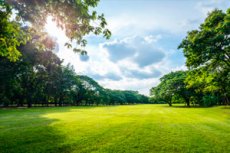
自然景观往往会激发大多数人的积极情绪和幸福感。欧洲工商管理学院(INSEAD)的最新研究表明,绿色景观还能鼓励人们选择更健康的食物。
《传播心理学》杂志发表的一项研究表明,身处自然环境中,例如穿过公园(而不是走在城市街道上)或只是看着窗外的绿色植物(而不是城市景观),会促使人们日后做出更健康的食物选择。
“我们的研究表明,导致人们选择不健康食物的不是城市观念,而是自然环境影响了人们吃更健康的食物,”该研究的共同作者之一、欧洲工商管理学院欧莱雅市场营销教授皮埃尔·尚东 (Pierre Chandon) 表示。
在一项研究中,参与者被随机分配在公园或巴黎繁华的街道上散步20分钟。之后,所有参与者都享用了一顿自助小吃,有些很健康,有些则不太健康。
尽管两组人吃的食物量大致相同,但在公园散步的人明显更喜欢健康的零食:70% 的选择是健康零食,而在城市散步的人只有 39%。
在另一项更具可控性的实验中,参与者被安排在模拟的“酒店房间”中,房间内有不同的景观:一片绿色的牧场、一条城市街道,以及一个控制条件——一面白色的墙壁,窗帘拉上。他们被要求从客房服务菜单中选择一餐,菜单中包含健康和不健康的主菜、饮料和甜点。
结果重复了之前的实验。那些观看自然风光的人会选择更健康的饮食,而那些观看城市景观或幕墙的人则表现出不太健康的偏好。
这项研究的灵感来自合著者玛丽亚·朗格卢瓦(Maria Langlois)。她注意到,在一次4500英里的慈善自行车骑行活动中,她和同伴们在穿越自然环境时,更容易选择更健康、未经加工的食物。朗格卢瓦现在是南卫理公会大学考克斯商学院的市场营销学助理教授,在就读欧洲工商管理学院(INSEAD)研究生院期间,她将这一观察转化为一系列严谨的实地和在线研究。
有趣的是,这项研究表明,并非所有自然环境都会产生相同的影响。环境中的亮度和绿化程度都会发挥作用。例如,当雪覆盖自然或城市景观时,景色不会影响食物选择。
研究人员进行了另一项实验,探究接触大自然是否会增加人们对真正健康天然食品或任何标榜健康的加工食品的偏好。他们为参与者提供了三种类型的零食:低热量、健康天然和美味放纵。
接触天然物种减少了人们对减肥零食的偏好,并且显著地将偏好从放纵的选择转向更健康、更天然的选择。
这些结果为推广更健康的饮食习惯带来了希望。学校、公司和其他组织可以在餐厅中使用自然图像,鼓励学生和员工做出更健康的选择。食品营销人员可以利用自然的视觉提示来推广健康或天然产品。
更重要的是,这项研究提醒我们城市规划的重要作用。到2050年,全球三分之二的人口将居住在城市。将绿色空间纳入未来的城市景观将变得更加重要。

